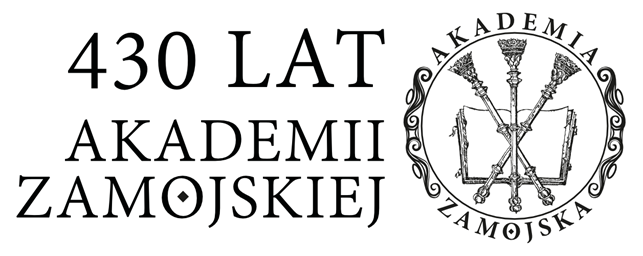Akbarialiabad, H., A. Rastegar, and B. Bastani. 2021. “How Sanctions Have Impacted Iranian Healthcare Sector: a Brief Review.” Archives of Iranian Medicine 24 (1):58–63. doi: 10.34172/aim.2021.09.
DOI: https://doi.org/10.34172/aim.2021.09
Albloshi, H. 2019. “The United States and Iran: the View of the Hardline Conservatives in the Islamic Republic.” In US Foreign Policy in the Middle East. From American Missionaries to the Islamic State, edited by G.F. Gresh and T. Keskin, 244–261. London – New York: Routledge Taylor & Francis Group.
DOI: https://doi.org/10.4324/9781351169646-15
Baldwin, D.A. 1985. Economic Statecraft. Princeton, N.J.: Princeton University Press.
Baldwin, D.A. 2013. “Power and International Relations.” In Handbook of International Relations, edited by W. Carlsnaes, T. Risse and B.A. Simmons, 273–297. London: SAGE Publications Ltd.
Baldwin, D.A., and E.B. Kapstein. 2020. Economic Statecraft. New edition. Princeton: Princeton University Press.
Brulé, D.J. 2005. “Explaining and Forecasting Leaders’ Decisions: A Poliheuristic Analysis of the Iran Hostage Rescue Decision.” International Studies Perspectives 6 (1):99–113.
DOI: https://doi.org/10.1111/j.1528-3577.2005.00196.x
Cortright, D., and G.A. Lopez. 2000. The Sanctions Decade. Assessing UN Strategies in the 1990s. Boulder, Colo.: Lynne Rienner Publishers.
DOI: https://doi.org/10.1515/9781685858490
Dizaji, S.F., and P.A.G. van Bergeijk. 2013. “Potential Early Phase Success and Ultimate Failure of Economic Sanctions: a VAR Approach with an Application to Iran.” Journal of Peace Research 50 (6):721–736. doi: 10.1177/0022343313485487.
DOI: https://doi.org/10.1177/0022343313485487
Drezner, D.W. 2003. “The Hidden Hand of Economic Coercion.” International Organization 57 (3):643–659. doi: 10.1017/S0020818303573052.
DOI: https://doi.org/10.1017/S0020818303573052
Drezner, D.W. 2022. “How Not to Sanction.” International Affairs 98 (5):1533–1552. doi: 10.1093/ia/iiac065.
DOI: https://doi.org/10.1093/ia/iiac065
Escribà-Folch, A. 2010. “Economic Sanctions and the Duration of Civil Conflicts.” Journal of Peace Research 47 (2):129–141.
DOI: https://doi.org/10.1177/0022343309356489
Fawcett, L., and A. Payne. 2023. “Stuck on a Hostile Path? US Policy towards Iran since the Revolution.” Contemporary Politics 29 (1):1–21. doi: 10.1080/13569775.2022.2029239.
DOI: https://doi.org/10.1080/13569775.2022.2029239
Fiedler, R. 2018. “Iran and the European Union after the Nuclear Deal.” CES Working Papers 10 (3):291–305.
Ghodsi, M., and H. Karamelikli. 2022. “The Impact of Sanctions Imposed by the European Union against Iran on their Bilateral Trade: General versus Targeted Sanctions.” World Trade Review 21 (1):33–58. doi: 10.1017/S1474745621000318.
DOI: https://doi.org/10.1017/S1474745621000318
Giumelli, F. 2017. “Winning Without Killing: the Case for Targeted Sanctions.” In Netherlands Annual Review of Military Studies 2017: Winning Without Killing: the Strategic and Operational Utility of Non-Kinetic Capabilities in Crises, edited by P.A.L. Ducheine and F.P.B. Osinga, 91–105. The Hague: T.M.C. Asser Press.
DOI: https://doi.org/10.1007/978-94-6265-189-0_6
Grauvogel, J., and C. von Soest. 2014. “Claims to Legitimacy Count: Why Sanctions Fail to Instigate Democratisation in Authoritarian Regimes.” European Journal of Political Research 53 (4):635–653. doi: 10.1111/1475-6765.12065.
DOI: https://doi.org/10.1111/1475-6765.12065
Haass, R., ed. 1998. Economic Sanctions and American Diplomacy. New York: Council on Foreign Relations.
Hufbauer, G.C., J.J. Schott, and K.A. Elliott. 2007. Economic Sanctions Reconsidered. 3rd ed. Washington, DC: Peterson Institute for International Economics.
Kamrava, M., ed. 2014. Beyond the Arab Spring. The Evolving Ruling Bargain in the Middle East. London: Hurst & Company.
DOI: https://doi.org/10.1093/acprof:oso/9780199384419.001.0001
Kokabisaghi, F. 2018. “Assessment of the Effects of Economic Sanctions on Iranians’ Right to Health by Using Human Rights Impact Assessment Tool: A Systematic Review.” International Journal of Health Policy and Management 7 (5):374–393. doi: 10.15171/ijhpm.2017.147.
DOI: https://doi.org/10.15171/ijhpm.2017.147
Kuersten, A. 2018. “Busted Sanctions: Explaining Why Economic Sanctions Fail.” Democracy and Security 14 (2):200–201. doi: 10.1080/17419166.2017.1345245.
DOI: https://doi.org/10.1080/17419166.2017.1345245
Kwon, O., C. Syropoulos, and Y.V. Yotov. 2022. “Do Sanctions Affect Growth?” CESifo Working Paper (9818).
DOI: https://doi.org/10.2139/ssrn.4154087
Lektzian, D., and P.M. Regan. 2016. “Economic Sanctions, Military Interventions, and Civil Conflict Outcomes.” Journal of Peace Research 53 (4):554–568.
DOI: https://doi.org/10.1177/0022343316638714
Mulder, N. 2022. The Economic Weapon. The Rise of Sanctions as a Tool of Modern War. New Haven – London: Yale University Press.
DOI: https://doi.org/10.12987/9780300262520
Nephew, R. 2018. The Art of Sanctions. A View from the Field, Center on Global Energy Policy series. New York: Columbia University Press.
DOI: https://doi.org/10.7312/neph18026
Pape, R.A. 1997. “Why Economic Sanctions Do Not Work.” International Security 22 (2):90–136. doi: 10.2307/2539368.
DOI: https://doi.org/10.1162/isec.22.2.90
Ronaghi, M. 2022. “Effects of COVID-19 on Iran’s Livestock and Meat Market.” Journal of Agricultural Science and Technology 24 (5):1017–1028.
Shahabi, V., A. Azar, F. Faezy Razi, and M.F. Fallah Shams. 2021. “Simulation of the Effect of COVID-19 Outbreak on the Development of Branchless Banking in Iran: Case Study of Resalat Qard–al-Hasan Bank.” Review of Behavioral Finance 13 (1):85–108. doi: 10.1108/RBF-06-2020-0123.
DOI: https://doi.org/10.1108/RBF-06-2020-0123
Takeyh, R., and S. Maloney. 2011. “The Self-Limiting Success of Iran Sanctions.” International Affairs 87 (6):1297–1312. doi: 10.1111/j.1468-2346.2011.01037.x.
DOI: https://doi.org/10.1111/j.1468-2346.2011.01037.x
Valerio Jovan, C. 2021. “The United States Unilateral Withdrawal From the Restrictions of Iran’s Nuclear Program in JCPOA 2015 Under International Law.” Padjadjaran Journal of International Law 4 (2):247–264. doi: 10.23920/pjil.v4i2.414.
DOI: https://doi.org/10.23920/pjil.v4i2.414



 English
English
 Język Polski
Język Polski




